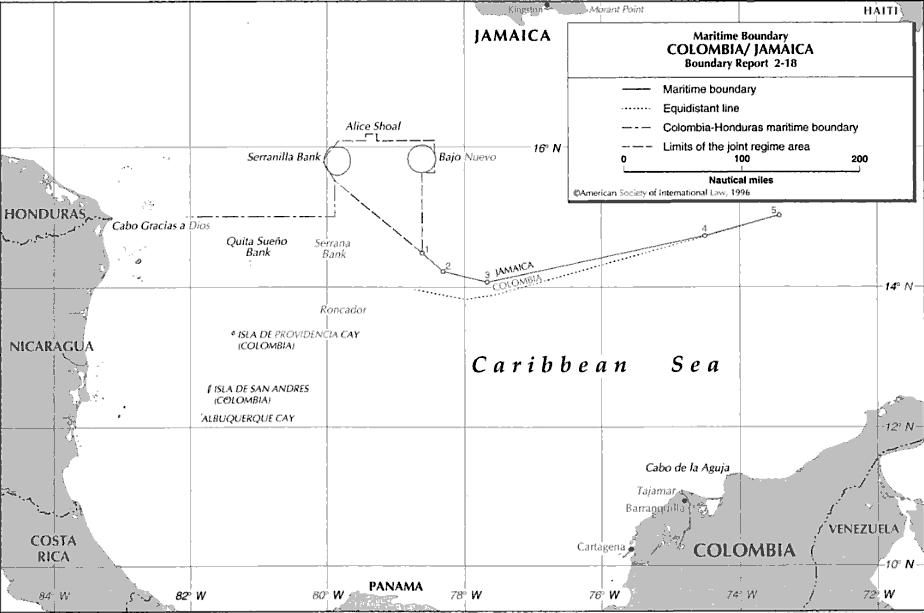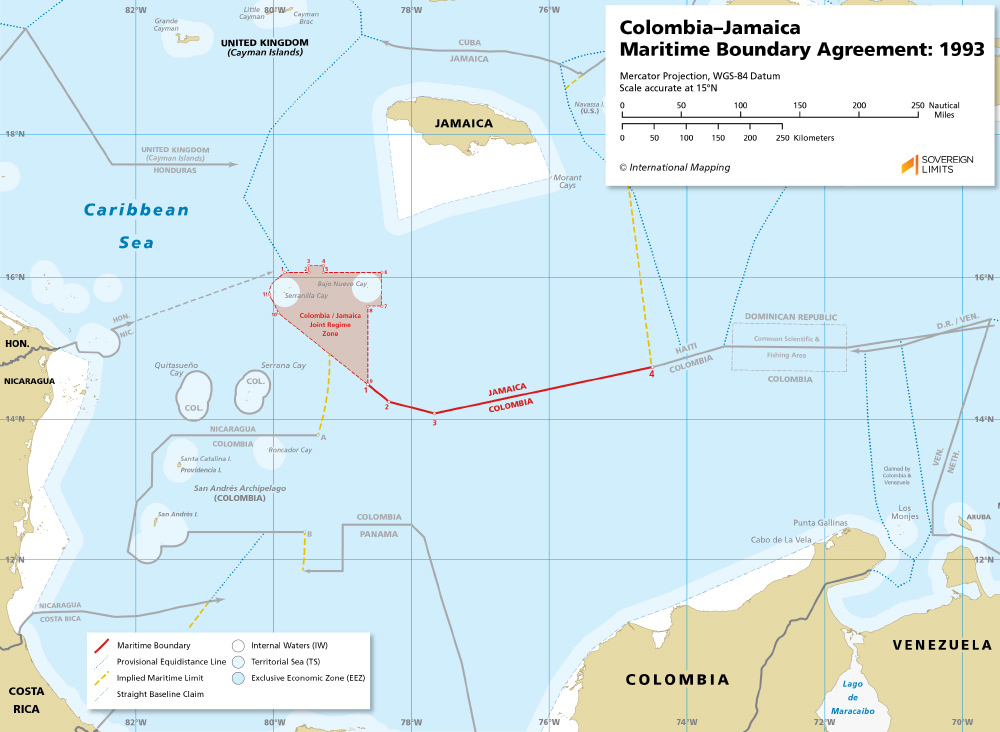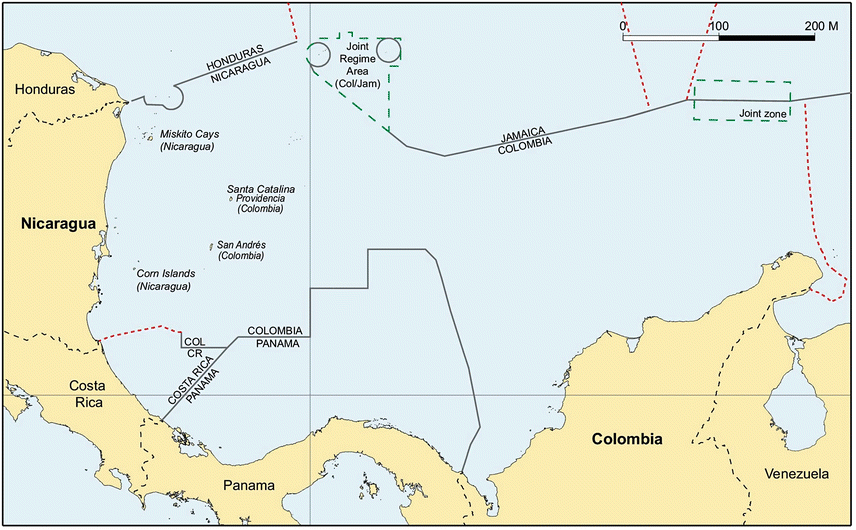In 1993 Colombia and Jamaica concluded a treaty (1993 Treaty) concerning their overlapping claims to a continental shelf and EEZ in the Caribbean Sea. Article 1 of the 1993 Treaty establishes a maritime boundary between the two States. Immediately to the west of the boundary, the 1993 Treaty also establishes a ‘Joint Regime Area’ in which, ‘pending the determination of the jurisdictional limits of each Party …, the Parties agree to establish … a zone of joint management, control, exploration and exploitation of living and non-living resources’. Article 3(1), sub-paragraphs (b) and (c) of the 1993 Treaty exclude two circular areas of 12 nautical miles radius from the Joint Regime Area. One circular area surrounds the cays of the Seranilla Bank and the other surrounds the cays of Bajo Nuevo. Both of these groups of features are claimed by Colombia – a claim that has been disputed on various occasions by Honduras, Jamaica, Nicaragua and the United States.
Sensitivity on the part of Jamaica to these overlapping sovereignty claims is evident in the text of the 1993 Treaty, which does not contain an explicit recognition of Colombian sovereignty over the features. However, the chart attached to the Treaty does refer to the two circular areas as ‘Colombia’s territorial sea in Serranilla and Bajo Nuevo’. Relevant spatial characteristics of the 1993 Treaty are illustrated in Figure.
Design features of provisional joint management frameworks:
Articles 3(2)–(6) of the 1993 Treaty establish a framework for the cooperative exercise of national jurisdiction within the Joint Regime Area. Article 3(2) sets out a list of activities that each State is entitled to carry out. These correspond to the functional components of jurisdiction attributed by the LOSC to both coastal States in their respective EEZ and continental shelf. Activities within the Joint Regime Area concerning development of non-living resources, marine scientific research, and protection and preservation of the marine environment are required to by undertaken on ‘on a joint basis agreed by the Parties.’
National jurisdiction within the Joint Regime Area is allocated by reference to nationality and the flag State of a vessel – Article 3(5) stipulates that ‘each Party has jurisdiction over its nationals and vessels flying its flag or over which it exercises management and control in accordance with international law’. Each Party is required to take certain steps when its nationals or vessels have been alleged by the other Party to have breached either the provisions of the 1993 Treaty or any measures adopted for their implementation. Article 3(6) sets out an agreement to ‘adopt measures for ensuring that nationals and vessels of third States comply with any regulations and measures adopted by the Parties’ that concern activities within the Joint Regime Area.
Article 4 of the 1993 Treaty provides for the establishment of a ‘Joint Commission’, consisting of one representative of each Party, that is required to develop ‘conclusions’ concerning (1) ‘modalities’ of the Treaty’s implementation, (2) the carrying out of activities in the Joint Regime Area, (3) the adoption of measures concerning vessels and national of third States, and (4) any other relevant functions assigned to it by the Parties. The Commission not entrusted with ongoing functions. Rather, it is required to complete the tasks assigned to it ‘within six months from the commencement of its work.’
The 1993 Treaty does not contain a specialized mechanism for settling disputes concerning its interpretation and application. Rather, Article 7 of the Treaty provides for dispute settlement ‘by agreement between the two countries in accordance with the means for the peaceful settlement of disputes provided for by international law.’
Comment concerning functional coverage:
The 1993 Treaty contains provisions allocating coastal State competence and/or jurisdiction within the relevant OCA in a complete set of functional contexts. It specifies the terms on which Colombia and Jamaica are to implement within the relevant OCA all of the functional components of their coastal State jurisdiction.
However, the continued sovereignty disputes concerning Seranilla Bank and the cays of Bajo Nuevo are serious impediments to jurisdictional clarity concerning management of the Joint Regime Area. The claims of Honduras and the United States to these features are no longer actively asserted. In December 2001 Nicaragua submitted an application to the International Court of Justice which requested, inter alia, a judgment recognizing Nicaraguan sovereignty over both features. The Court is currently deliberating on the merits of this issue, which form part of a broader territorial and maritime dispute. The outcome of proceedings will be keenly observed.



